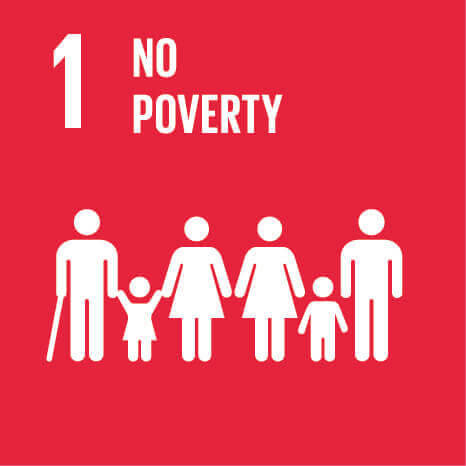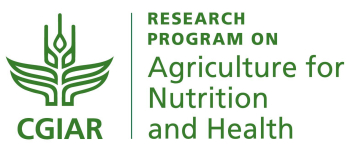Using biofortified sweetpotato to fight micronutrient malnutrition among vulnerable populations in sub-Sahara Africa
Published on: March 30, 2020, Submitted by Claudio Proietti on: March 29, 2020, Reporting year: 2019
A multi-partner coalition led by CIP contributed to the release of 150 improved sweetpotato varieties, 100 of them orange-fleshed, with high levels of vitamin A, across 17 countries of SSA. In total vines of improved varieties were distributed to more than 6.2 M households potentially reaching 29 million individuals.
2016 was a great year for SPHI – External recognition – Much progress in dissemination
For communication use
In 2009, a multi-partner coalition including R4D (research for development) organizations and major donors came together as the Sweetpotato for Profit and Health Initiative (SPHI) to promote the broader use of improved varieties of sweetpotato across Africa. The coalition, led by the International Potato Center (CIP), contributed to the release of 150 improved varieties of sweetpotato, including 100 orange-fleshed ones (OFSP), which have high levels of vitamin A (1). This is important for combating weakened immune systems, risk of blindness, childhood diseases such as diarrhea and other health problems that stem from vitamin A deficiency. Just one small cooked root of OFSP meets the daily vitamin A needs of a young child.
SPHI was a highly ambitious intervention which distributed new sweetpotato varieties to a massive group of low-income farmers over a large area. The varieties were bred specifically for improved nutrition, but also to resist pests, diseases, abiotic shocks and to be high yielding. The distribution was especially challenging because sweetpotatoes are vegetatively propagated. Farmers cannot be simply given a packet of seed, as with cereal grains or beans, for example. Partners involved in SPHI had to address a series of logistical challenges to get fresh cuttings to farmers in the villages. This meant establishing trained multipliers, who knew how to produce quality planting material by minimizing virus infestation.
In all, the coalition set up 1,030 decentralized vine multipliers, farmers who could produce and sell vines to neighboring villagers. An ingenious phone survey took advantage of the recent, wide acceptance of cell phones across Africa to reach out to the vine multipliers. Although they were now largely free of project support, 76% of the vine multipliers contacted reported that they were still producing sweetpotato vines for other rural households. The survey also enabled plant breeders to follow which varieties are the most demanded over time.
The coalition tracked how the improved varieties were distributed across the continent. 6.2 million households (which included about 29 million people) received vines of the new sweetpotato varieties in 17 countries: Tanzania, Burkina Faso, Malawi, Ghana, Kenya, Mozambique, Uganda, Nigeria, Ghana, Zambia, Ethiopia, South Africa, Angola, Madagascar, Rwanda, Benin, and Burundi (2).
This success with SPHI is a model that can be followed by future efforts to distribute vegetatively propagated crops across a vast area and to use a monitoring system to keep track of the farmers who benefited.
Elaboration of Outcome
The Sweetpotato for Profit and Health Initiative (SPHI) is a multi-partner coalition led by CIP. In 2009, the SPHI set an ambitious goal of reaching 10 million households by 2020. It brought together numerous organizations, known as the “coalition of the willing” that saw the promise/potential of using biofortified sweetpotato to fight micronutrient malnutrition among vulnerable populations in sub-Sahara Africa and improved sweetpotato varieties, both orange-fleshed and other flesh colors, to increase household incomes. The Initiative specifically had four goals, namely: i) building consumers’ awareness of sweetpotato’s nutritional benefits, ii) assuring that 10 million African households in 16 target countries get access to improved varieties of sweetpotato; iii) diversifying use of sweetpotato on the continent, and iv) expanding market opportunities for sweetpotato growers.
To date, the SPHI has, with national partners, lead the release of 150 improved sweetpotato varieties, 100 of them orange-fleshed, across 17 countries of SSA. SPHI established a monitoring system with its partners to track annually farmers who had received vines of new sweetpotato varieties (1). Data collected showed that over the entire period (2010 to 2019), more than 29 million individuals (6.2+ M households) have been reached directly or indirectly with improved varieties of sweetpotato (2). These have contributed to improved diet quality of vulnerable household members through numerous dissemination efforts, many of which had strong nutrition interventions.
This massive dissemination effort was supported by the work of more than 1,000 decentralized vine multipliers (DVMs). As part of the monitoring effort, 741 DVMs based in 11 countries were reached by phone for an update survey. Among these, 76.2% were actively producing vines while 23.8% reported to have stopped vine production citing lack of market as the major contributor and drought as the second most important constraint towards continued vine production. Vine multiplication in the 11 SPHI countries is predominantly done by men who constitute 70.3% of those contacted compared to 29.7% women.
Stage of Maturity and Sphere of influence
-
Stage of Maturity: Stage 2
-
Contributions in sphere of influence:
1.3.1 - Diversified enterprise opportunities
2.1.2 - Increased access to diverse nutrient-rich foods
Acknowledgement
This research was undertaken as part of the CGIAR Research Program on Roots, Tubers and Bananas (RTB).
Projects
-
Feed the Future Rwanda Orange Fleshed Sweet Potato (OFSP) for Income and Nutrition Activity - VISTA RWANDA
-
SASHA II: Sweetpotato Action for Security & Health in Africa
-
The Viable Sweetpotato Technologies in Africa (VISTA) Malawi
-
The Viable Sweetpotato Technologies in Africa (VISTA) Mozambique
-
The Viable Sweetpotato Technologies in Africa (VISTA) Tanzania




































.jpg)